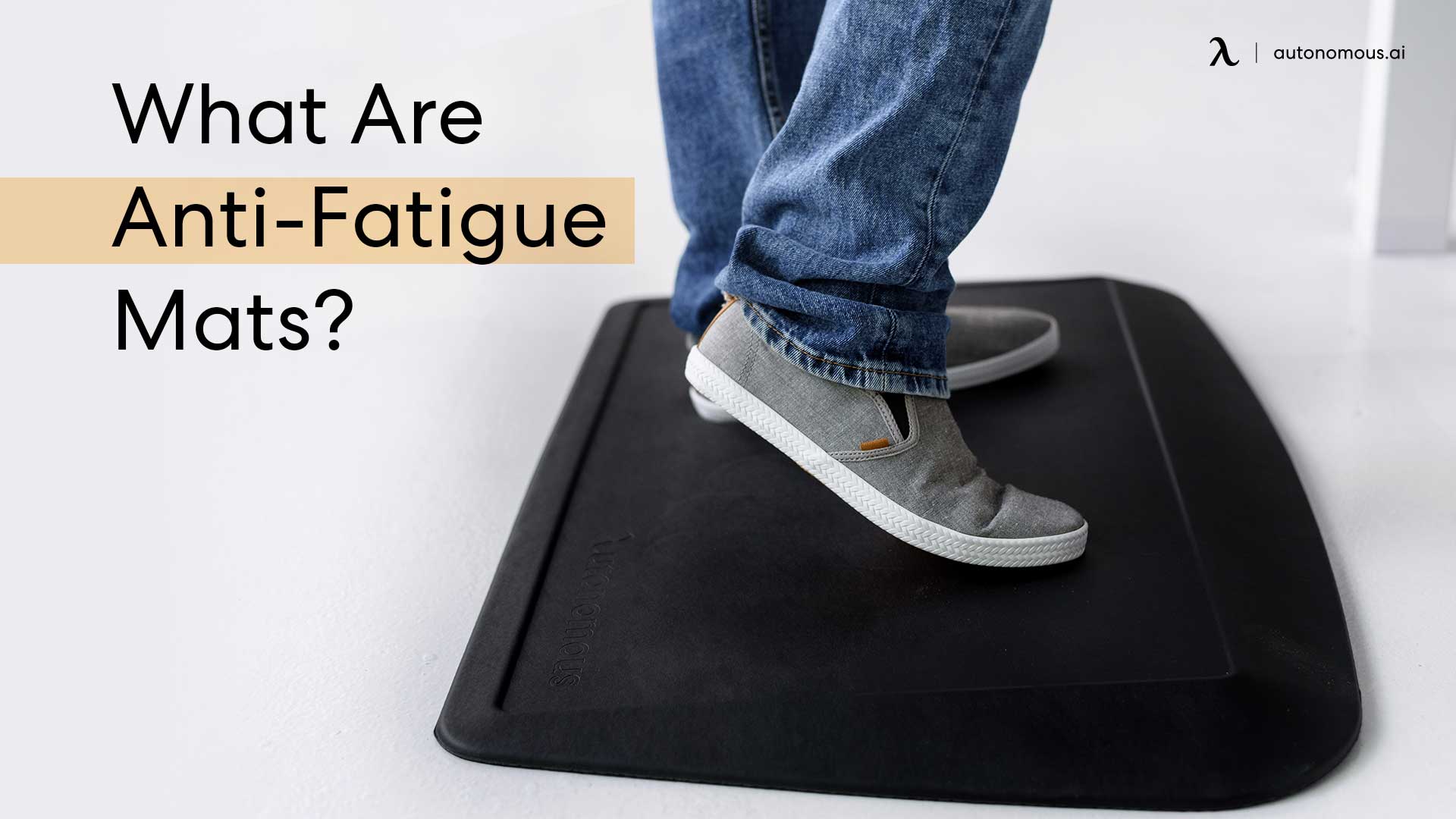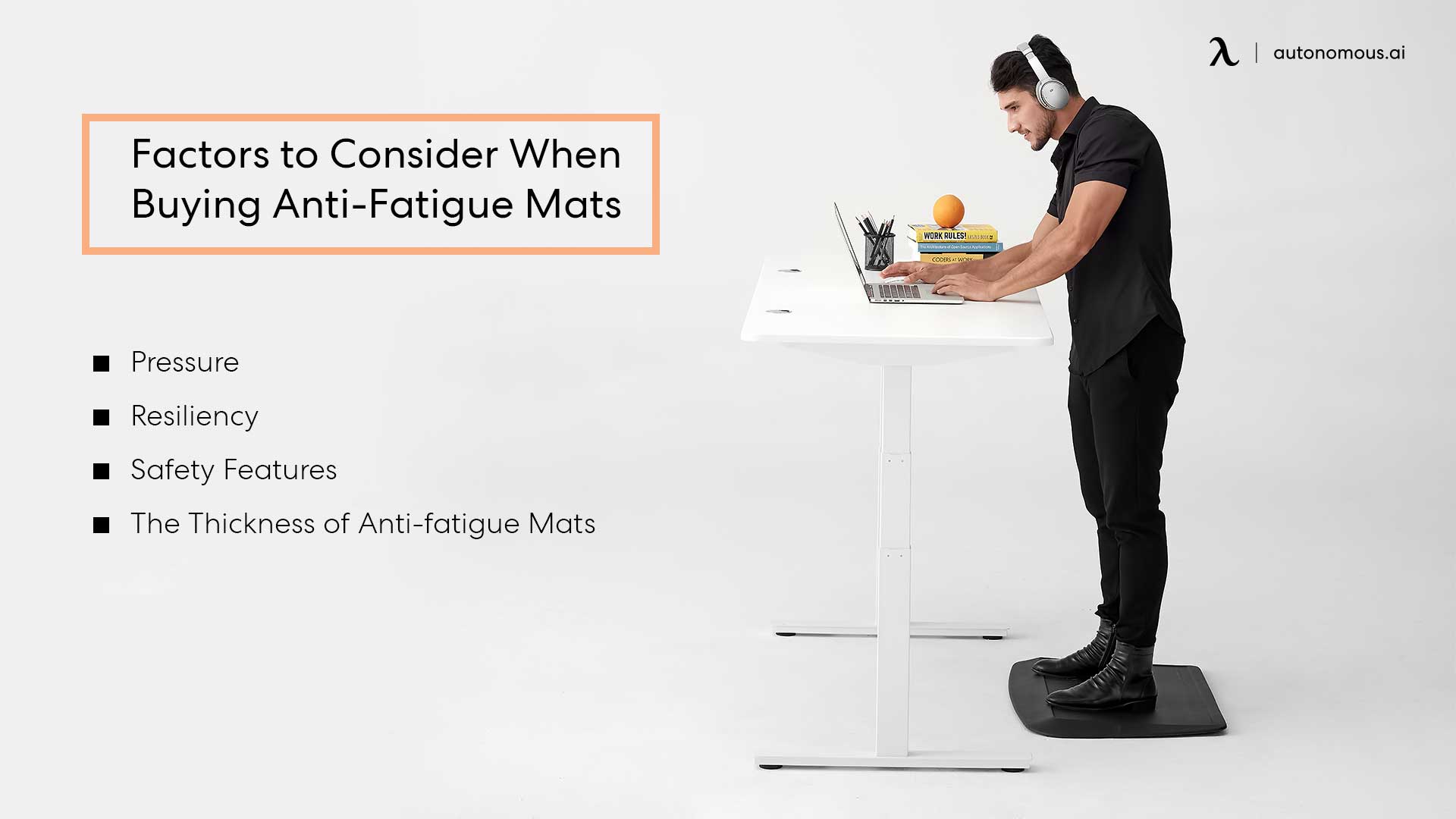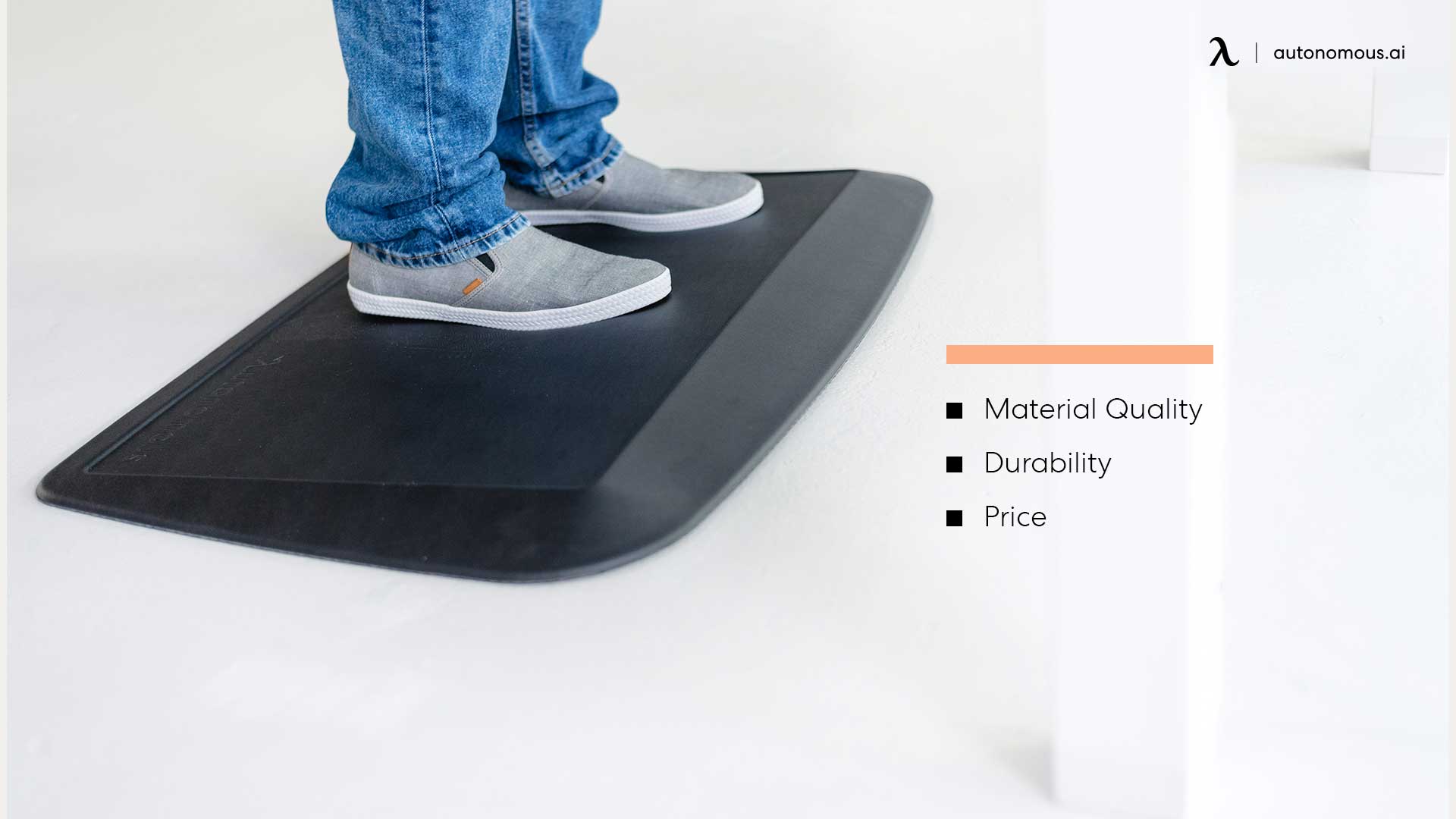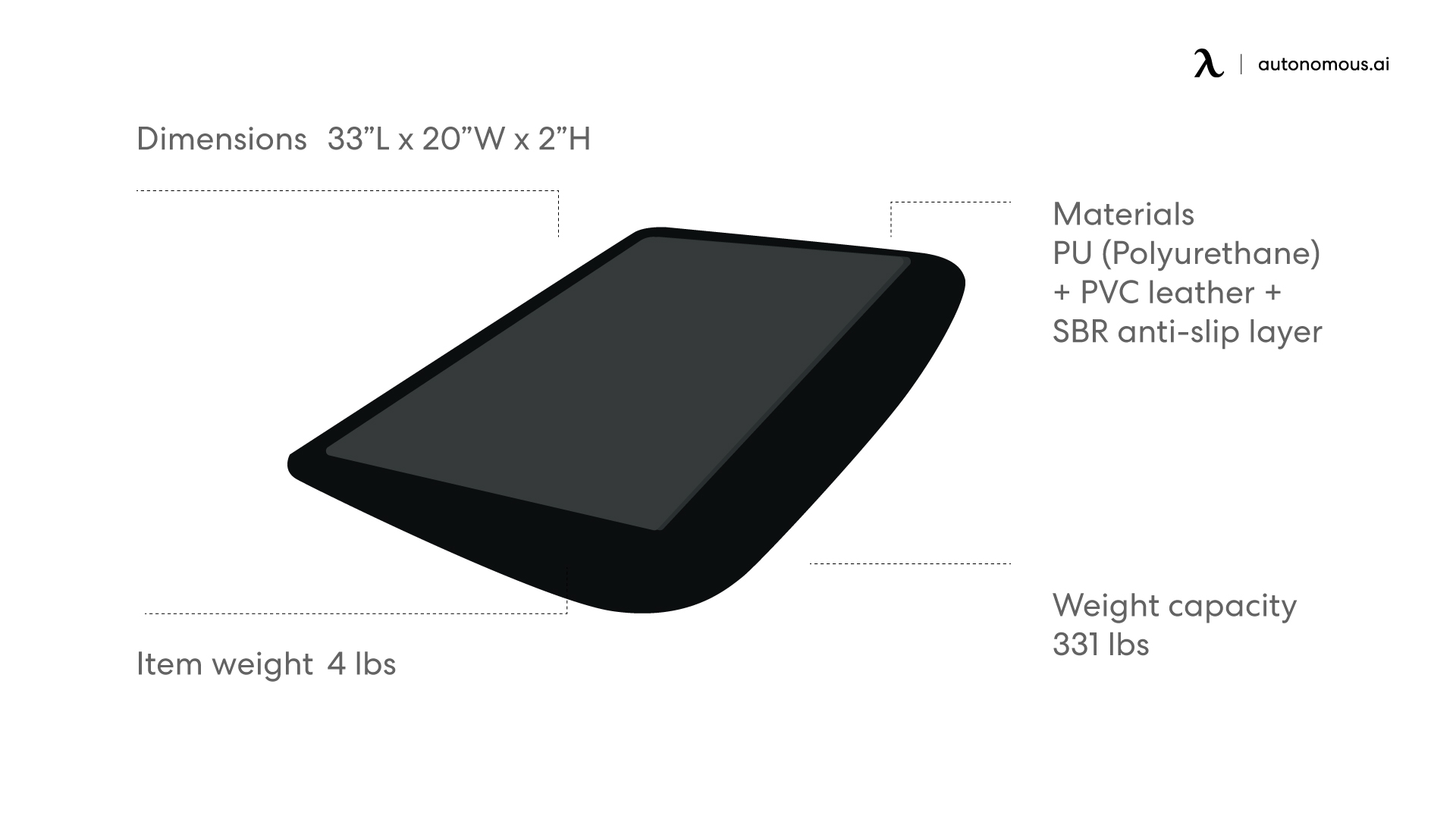/https://storage.googleapis.com/s3-autonomous-upgrade-3/static/upload/images/new_post/what-you-should-consider-when-buying-anti-fatigue-mats-575-1597813892441.jpg)
What You Should Consider When Buying Anti-Fatigue Mats
Sore feet, stiff neck, lower back pain, and muscle fatigue are all common symptoms in today’s workplace. More than 50% of working Americans admit to having back pain symptoms each year. And according to experts, about 80% of the population will experience back problems in their lives.
Many people, especially office workers, struggle during working hours. Sitting or standing can lead to unbearable aches and pains, especially if you sit or stand for prolonged periods.
Fortunately, investing in a quality anti-fatigue mat is an affordable and ergonomic solution. Anti-fatigue floor mats can help you have a happier and comfortable working experience.
What are anti-fatigue mats and how can they help? Keep reading for handy buying tips to help you buy the right anti-fatigue mat that suits you and your office.
What are anti-fatigue mats?
Anti-fatigue mats are mats with ergonomic properties. They are designed to reduce fatigue and muscle ache caused by standing for extended periods on hard surfaces, such as cement floors. These fatigue-reducing mats are made from various materials, including rubber, carpeting materials, wood, and vinyl.
Anti-fatigue mats help in reducing foot and lower limb disorders for workers who stand still for long periods. These mats come in different colors, sizes, and shapes to match the different surroundings. Also, anti-fatigue mats are available in different thickness and elasticity, to allow you to choose one that suits your needs perfectly.

Why do you need an anti-fatigue mat?
One of the primary reasons why you need to buy an anti-fatigue mat is to improve your health. Your body needs constant movement. So, sitting or standing still for extended periods can be harmful to your health.
The pain from too much sitting or standing can cause headaches, swelling of feet, varicose veins, cardiovascular disorders, neck and shoulder pain, and muscle fatigue. These injuries are a common prevalence among office workers. Lower back pain is the most common musculoskeletal problem among office workers, and it is the most common cause of work-related disability among people below 45 years.
Most offices have concrete or ceramic floors. This type of flooring can hurt your legs and joints because it doesn’t offer shock absorbency or resistance. Fortunately, using an anti-fatigue mat can make you more comfortable. Fatigue-reducing mats can also improve blood circulation, improving your overall health.
However, before you head out and buy an anti-fatigue mat, read on for tips to help you buy the right mat that suits your needs.
Factors to consider when buying anti-fatigue mats

1. Pressure
Before buying an anti-fatigue mat, check the amount of pressure it can withstand. Different mats can support varying body weights. Thus, you need to pick a mat that suits your physical physique perfectly.
For instance, if you weigh 250 lbs and you choose a mat designed for lesser weight, such as 150 lbs, that mat won’t be a perfect fit. It’ll lose its composure and anti-fatigue properties, and it will be useless in the long run.
All good quality mats offer a weight range to choose from.
2. Resiliency
Determining the resiliency of an anti-fatigue mat is crucial. Because the resiliency of the mat greatly influences the comfort level of the person standing on it.
Thus, an overly soft anti-fatigue mat won’t last long compared to a quality resilient orthopedic mat. A quality fatigue-reducing rubber mat improves blood circulation, and it stimulates leg muscles by encouraging subtle changes in posture, which increase blood flow.
Alternatively, choosing a mat that’s too hard won’t be beneficial, especially if you use it over a hard floor surface. It’ll cause unwanted pressure and discomfort on the leg muscles, increasing fatigue. Ultimately, this’ll reduce your productivity.
A good anti-fatigue mat should offer optimal balance while being responsive at the same time. The mat should return to its original shape quickly as you shift your weight on it. Ultimately, you want an anti-fatigue mat that’ll offer protection of a cushioned surface in case of a fall while offering support and comfort for daily standing and walking.
3. Safety features
Another factor you should consider when buying an anti-fatigue mat for your office is safe. So, when choosing an anti-fatigue mat, make sure it fits securely on the floor. To avoid slipping and tripping hazards, most anti-fatigue rubber mats have beveled edges, which allow safe movements on and off the mat. For smaller and lightweight anti-fatigue mats, use double-sided rug tape to keep the mat securely in place. For slippery workplaces, choosing an anti-fatigue mat with a textured surface offers additional traction by minimizing slip and trip hazards.
4. The thickness of anti-fatigue mats
When buying an anti-fatigue mat, the thickness of the mat is also critical. Don’t buy a mat that’s too thick because it won’t provide enough support for your body. Also, it shouldn’t be too thin because it’ll cause more pain and fatigue in your legs.
Anti-fatigue mats that are at least 3/8 inch, ½ inch or closer to 1 inch thick are the best. However, choosing a mat that’s too thick can cause tripping hazards. Additionally, the best mat should have tapered edges to prevent tripping and slipping hazards; the wider the taper, the better.
5. Material quality

Anti-fatigue mats are available in different materials, including foam, gel, rubber, and vinyl. The material greatly affects the quality and overall effectiveness of an anti-fatigue mat.
When choosing your mat, you need to think about where you’ll be using it. Will you be using it in a high traffic area? Is it in a slippery work environment? These are critical factors to consider when choosing the perfect mat for your office.
Choosing a mat with overly soft foam and a vinyl cover isn’t right. Because these mats will force you to try to keep your balance throughout the day.
The best anti-fatigue mats are those with high-density foam covered with sturdy material. These mats are designed specifically to distribute your weight evenly. Plus, the material doesn’t curl up at the edges, which can cause tripping hazards.
6. Durability
Will the mat stand the test of time? Is it durable? Because an anti-fatigue mat goes on the floor and it’s being stood on constantly, you need to choose one that’s durable. Yes, there are super cheap mats on the market; however, they’re of inferior quality.
The right anti-fatigue mat should be strong to withstand general wear and tear. Also, it should be highly resistant to stains, water, and punctures. It should be easy to clean. Most high-quality anti-fatigue mats can be cleaned easily with basic materials.

7. Price
As mentioned, cheaper anti-fatigue mats are made from low-quality materials. They’re not durable and can easily break down from general wear and tear. Also, they’re detrimental to your health.
Spending a few extra bucks can guarantee your anti-fatigue mat fulfills its purpose of supporting your body. Also, it ensures it can withstand the test of time and you won’t need to replace it quickly.
Autonomous Anti-fatigue mats strike the right balance between affordability and quality. These anti-fatigue mats have optimal thickness, and they’re durable.
Conclusion
Anti-fatigue mats can guarantee better health, improved posture, and happier life. They can change your work experience. Pairing an anti-fatigue mat with your standing desk can improve your concentration and productivity.
However, when buying an anti-fatigue, it’s essential to consider the working conditions, type of use, material, and safety features. This’ll help you make an educated decision by buying the right mat that fits the surface requirements and ergonomic needs of your office.
Read more...
Stay connected with us!
Subscribe to our weekly updates to stay in the loop about our latest innovations and community news!
Interested in a Link Placement?
Spread the word
.svg)



/https://storage.googleapis.com/s3-autonomous-upgrade-3/production/ecm/230914/bulk-order-sep-2023-720x1200-CTA-min.jpg)

/https://storage.googleapis.com/s3-autonomous-upgrade-3/static/upload/images/new_post_author/karen-kimonye-15.png)